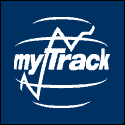
Jim Bray's TechnoFILE
http://www.jewishworldreview.com -- If you're in the market for a big, fast, reliable, high-end hard disk, Quantum may just have your answer.
It's the SCSI-based 36.7 gigabyte Atlas V, a high-speed, high-capacity model that's built for performance and reliability.
In the grand scheme of things, SCSI (Small Computer Serial Interface) is the best choice for speed and flexibility, though it comes at a cost: you not only have to buy the hard drive, you need the SCSI interface as well.
I used the Atlas V with an Adaptec "Ultra 2 Wide" PCI card, which costs a couple of hundred dollars on its own. Add the Atlas' price of about $700, and you have quite an investment.
Ah, but what a system!
It's wonderful to have 36 gigs worth of elbow room. You can do full installations of all your favorite software, store your data files at will, and have enough space left to download audio files or record CDs to your heart's content -- and even get into space-intensive applications like video editing.
The Atlas V slides happily into a 3.5-inch drive bay inside your PC, and once you've ensured that it's set to the correct SCSI address (here's where the manual comes in handy!), you hook it to the SCSI card and the PC's power supply. Then, once you've formatted it, you're off to the races.
The hard disk spins at 7200 RPM, has an "average seek time" of 6.3 milliseconds (which means it's very quick at finding data stored on it), and transfers data at up to 160 Megabytes per seconds. That's even faster than the fast SCSI can handle!
The drive's "sustained transfer rate" (which is a more real-world figure for how quickly it'll pass data) is 29 MB/second, so it's definitely no slouch.
Quantum actually targets this drive at higher-end servers and workstations, including ones used for engineering, 3-D graphics rendering and/or broadcast video. Not that they won't sell you one if you want this level of performance and can produce the proper identification (a valid credit card should be sufficient).
The Atlas V is more than just a big and fast pretty face. Since it's meant for high-end installations where down time can mean death to your bottom line, it's also designed to be extremely reliable.
This means it partakes of Quantum's "Shock Protection System II" technology, which, according to the company, means the Atlas V can take "non-operating shocks" of up to 300 Gs.
Geez!
I'll have to take Quantum's word for this, because I wasn't about to work it over with a rubber mallet just to see if it would dump all my precious data.
The drive can also exploit Quantum's "Data Protection System," a testing utility that pores over the drive, looking for errors.
The Atlas V is a little noisier than the Atlas IV I tried last year, but that's hardly a criticism. The disk's still very quiet, and who really cares anyway, as long as it doesn't sound like a Boeing 747's landing on your desktop?
I should mention that formatting 36 gigabytes from scratch can be time-consuming, but that's really a cause for celebration. Besides, the 36 gig gives you lots of room for "partitioning" the disk into a number of different drives.
Why would you want to do that? Well, you might want to keep your operating system on one partition (called drive "C," for example), your applications on another (drive "D") and your data files on yet another ("E"). This way, if you need to reformat drive "C," you don't lose the rest of your personal files.
You can also use partitioning to set up a "multiple booting" system. For instance, you might want a FAT32 partition from which to run Windows 98, and an "NTFS" partition for Windows 2000, and maybe a partition that lets you try out Linux so you can decide for yourself if the "upstart" Operating System might knock off Bill Gates better than Janet Reno can.
So, while Quantum may not have designed the Atlas V for the average home or home office, people who can justify a "hard-drivin' Lexus" may be happier in the long run than if they'd opted for a "computer storage Camry."
The Atlas V is also available in 18.3 GB, and 9.1 GB
JWR contributor Jim Bray publishes TechnoFILE magazine, "the consumer's non-technical guide to today's technology." You may comment by clicking here.
05/26/00: RCA Lyra personal digital player
05/22/00: XIRCOM helps take the "bored" out of board rooms
05/18/00: FRONTX offers friendly ports of entry
